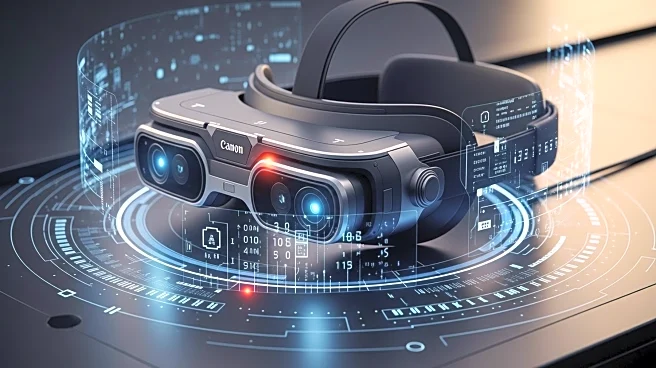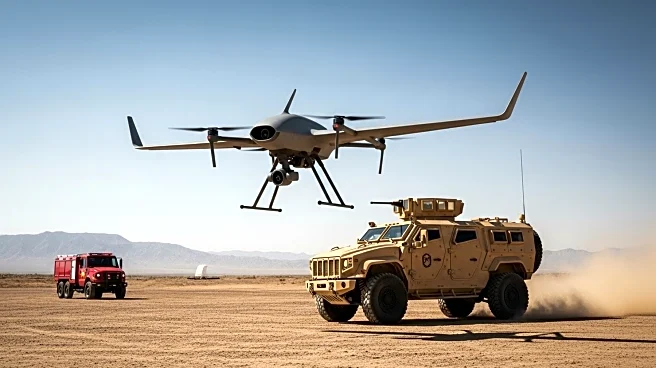What's Happening?
Anduril has revealed EagleEye, a mixed-reality system designed to integrate AI and live sensor feeds into soldiers' sightlines. This system comes in three form factors: helmet, visor, and glasses, and includes built-in teammate tracking. The unveiling follows Anduril's takeover of the Army's IVAS program earlier this year and a $159 million prototyping award. EagleEye aims to enhance battlefield awareness and decision-making by integrating multiple sensor feeds into a single field-of-view. The system's introduction marks a shift from Microsoft-led testing to vendor-driven prototyping, compressing procurement timelines and raising stakes for suppliers and soldiers.
Why It's Important?
EagleEye's introduction signifies a major shift in military augmented reality (AR) technology, potentially transforming how soldiers interact with battlefield data. The integration of AI and real-time sensor feeds could improve situational awareness and decision-making, offering strategic advantages in combat. This development accelerates the adoption of AR in military operations, highlighting the growing importance of technology in modern warfare. The shift from software to hardware emphasis by Anduril may influence future military procurement strategies, impacting industry partnerships and regulatory considerations.
What's Next?
The deployment of EagleEye is expected to speed up field adoption of AR technology, necessitating expanded training cycles for soldiers. Privacy and data retention concerns may prompt discussions among lawmakers and defense analysts. As AR becomes more prevalent in military operations, questions regarding consent and civilian data protections will likely arise. The Army's procurement process will continue to evolve, with potential implications for industry stakeholders and policy makers.
Beyond the Headlines
The introduction of EagleEye raises ethical and governance questions about the use of AI and AR in military contexts. The potential for increased surveillance and data collection may spark debates on privacy and oversight. The long-term impact on military training and operational strategies could redefine the role of technology in warfare, influencing future defense policies and international relations.











